
Create your own journey; Experience the best of Northern Spain at your own pace
This website uses its own and third-party cookies, for the proper functioning of the site and to generate usage statistics.
By continuing to browse we understand that you consent to our �ookie policy
Begin your unforgettable journey on the 'Camino de Santiago from Pamplona to Burgos', a renowned 220-kilometer 'pilgrimage route in Northern Spain'. Perfect for those seeking a 'moderate difficulty hiking experience', this path offers a unique blend of 'natural beauty and cultural enrichment'. As you 'walk through La Rioja's vineyards', enjoy breathtaking 'panoramic views of the Spanish countryside' and explore 'historic abbeys and cathedrals along the Camino'.
'Reach the historic city of Burgos', the endpoint of this segment of the 'Camino Francés', where 'medieval Spanish architecture' and a rich history await. This 'spiritual journey on the Camino de Santiago' is more than a simple trek; it's an opportunity for 'personal discovery and cultural exploration'. Prepare yourself for a 'life-changing experience on one of Spain's most famous pilgrim routes', where each step brings new insights and connections to a deep historical legacy."
Click on Request a quote on the right column and contact us for a personalized offer tailored to your preferences.
✔ Daily departures all year round.
✔ Carefully selected hotels, always with private bathrooms.
✔ Personalized digital guide from Spain is More with practical route information and recommendations.
✔ Stage customization: Yes, always.
✔ Explore Pamplona's Beautiful Streets and Discover the Famous Running of the Bulls Route: Experience the charm of Pamplona by walking through its beautiful streets. Don't miss the opportunity to see the iconic route of the Running of the Bulls, a highlight during the famous San Fermin Festival. We recommend adding an extra night in Pamplona to fully enjoy this unique experience.
✔ Embark on a Wine Route along Calle Laurel in Logroño: Enjoy the flavors of Logroño with a wine tour along Calle Laurel. This famous street is a must-visit for wine enthusiasts, offering a chance to taste a variety of local wines paired with delicious tapas.
✔ Visit a Winery and Enjoy a Wine Tasting in Logroño: Enhance your stay in Logroño with a visit to a local winery. Experience a wine tasting session to discover the exquisite wines of the region. Adding an extra night in Logroño allows you to immerse yourself in the wine culture and savor the local hospitality.
✔ Visiting the Yuso and Suso Monasteries, World Heritage sites since 1997. For this, you'll need an extra night in Nájera or Santo Domingo de la Calzada.
![]()
Click here to explore the Camino Francés:
Find key insights on distances, terrain, climate, and vital tips.
Pamplona - Burgos
Camino De Santiago Francés (French way)
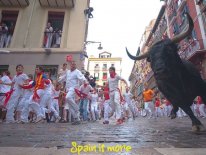
You will arrive to one the Northern Spains most charming cities, Pamplona. The city atmosphere-filled center is one of Spain's most attractive with loads of delicious tapas-bars and restaurants. If you want more time to explore and enjoy the city, an extra night is certainly recommendable.
Note: If you want to stay in Pamplona during the Sanfermines festival from the 6th to the 17th of July each year, the price will be significantly higher. In addition, it’s necessary to book at least eight months in advance during this period.
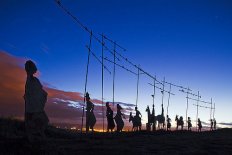
Climbing Mount Alto del Perdón (see picture) is the biggest obstacle on this day, but if the climb seems too hard, will you discover a recommendable detour in our guidebook. However, despite the difficulty we recommend the climb, because from the top you will have a spectacular view of Pamplona and the Pyrenees in one direction and a view of the easier upcoming stages of the route in the other. Today's stage ends in Puente de la Reina, which has a beautiful old town and a famous bridge from where the Camino heads west (The Queens bridge, Puente de la Reina).
Distance: 27 Km
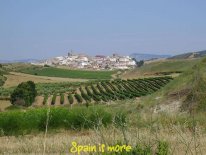
A few minor but steep hills bring you to Estella. Especially during the early part of this stage you will pass through many vineyards. It's recommendable to take the several opportunities to visit some of them and in this way also enjoy a little rest along the way.
Distance: 22 Km

Estella is a history-rich and exciting city with a beautiful old town.
Today's stage begins with a relatively gentle ascent and continues into flat and easy walking as you travel. There are several wineries along the way which can be visited, with a few of them also serving as excellent restaurants.
There’s not much shade available at this stage, so if you walk in the summer or on a sunny day it advisable to get an early start.
Distance: 22 Km

This is a flat and easy stage compared to everything you've experienced so far. You will pass several historical villages along the Camino. You will begin to be surrounded by vineyards, a sign that welcomes you to Logroño and La Rioja.
Torres del Rio is situated on a hilltop and has a nice old town in which to relax and explore.
Logroño is La Rioja's largest city and, of course, the center of many of the Rioja wineries. Besides an excellent glass of wine for which Logroño is so well-known, is also its great cuisine. In the city's well-preserved old town center there are also countless delicious tapas bars.
Distance: 27 Km
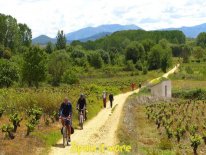
The parks and natural environment of the Grajera Reservoir top off the stay in Logroño and open the doors to the incredible Rioja landscape, filled with vineyards and orchards filled with fruit trees.
This stage takes you to Nájera, passing through Navarrete, a town celebrated for its traditional pottery. Later you walk on to Ventosa and the heights of San Antón. These hills offer views of unending rows of vineyards, a beautiful sight especially in September when harvest has reached its peak.
Distance: 29 Km
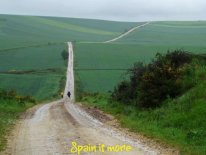
Today the goal is Santo Domingo de la Calzada, a town in Rioja Alta. The route passes through the charming town of Azofra.
In this segment, due to its proximity to Castilla, the landscape is rich with abundant fields of grain. Moreover, Santo Domingo itself is a vibrant town. There are many restaurants with delicious food and a very well preserved city centre that attract tourists all year round.
Distance: 21 Km
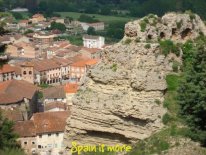
Today the Camino enters Castilla y León. From now on, and for a couple of weeks, you will pass through the widened passages of the “Meseta Castellana,” the Castillian plateau. The next closest objective is Belorado, located in the shade of a peak where ancient hermit caves and the ruins of a mythical Castle still remain.
Distance: 22 Km

The following stage passes through several interesting monuments such as the Virgen de la Peña Church, carved out of the rock as well as some nicely located castle ruins.
This part of the journey passes through hillside landscapes and extensive forests (the last before reaching León, and if you have chosen to continue walking from Leon to Santiago, you will not see true forests for approximately 300 km.).
Distance: 24 Km

The first leg of the trip passes through a small pine forest before seeing the outskirts of Burgos.
Burgos was founded in the year 884 and its heritage shines with its own light. The city is filled with monuments that include its crowned jewel, an amazing gothic cathedral. In fact, the cathedral of Burgos became a UNESCO World Heritage Site in 1984. Overall, Burgos gives off a medieval feeling, a sensation completed by its inviting tapas bars.
Distance: 26 Km
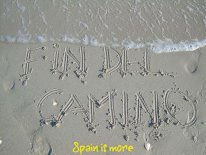
Departure from Burgos to Bilbao, Barcelona or Madrid.
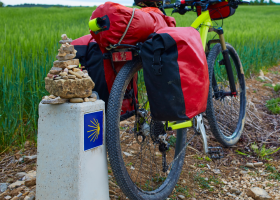
Pilgrimage by bike through incredible landscapes
9 days / 8 nights
From 850 EUR/pers.
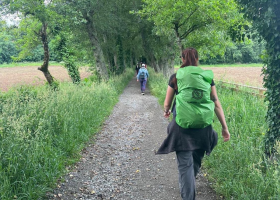
Pilgrimage on the last 116 km from Sarria to Santiago – the perfect taster
8 days / 7 nights
From 630 EUR/pers.

Pilgrimage from Porto to Santiago via the original Portuguese route through Tui.
14 days / 13 nights
From 1190 EUR/pers.
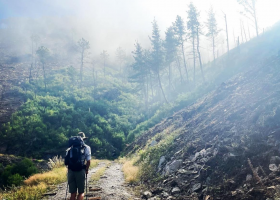
Pilgrimage from Oviedo to Santiago through breathtaking landscapes.
16 days / 15 nights
From 1090 Euro/pers.

Discover the 2025 rules for la Compostela. Learn requirements, stamps, and tips to get your pilgrim certificate on the Camino de Santiago.
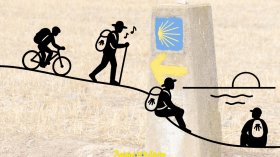
Which section of the Camino is the easiest? Which Camino is the most beautiful? And where is it actually the hardest to walk?